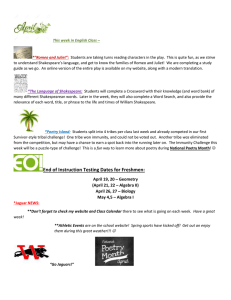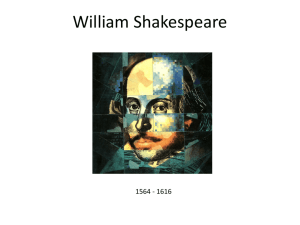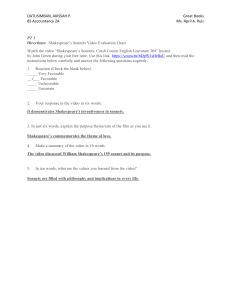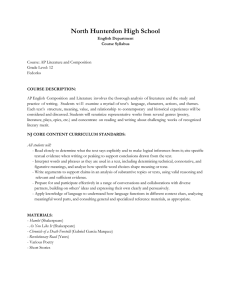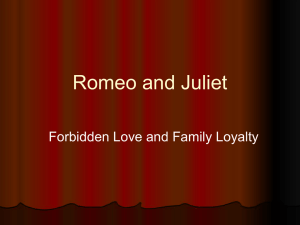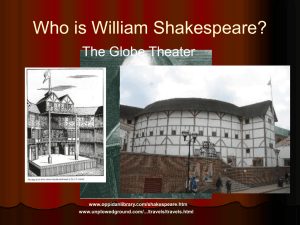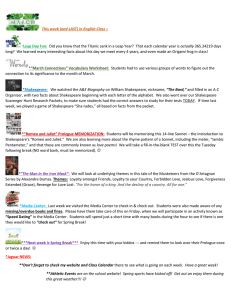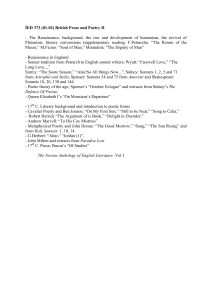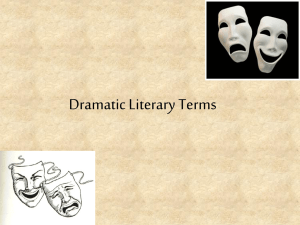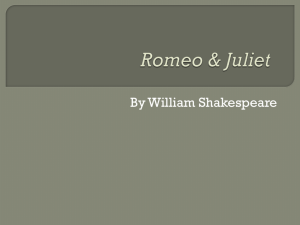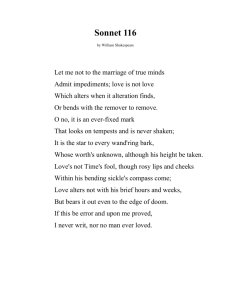Eng 1DP Review
advertisement
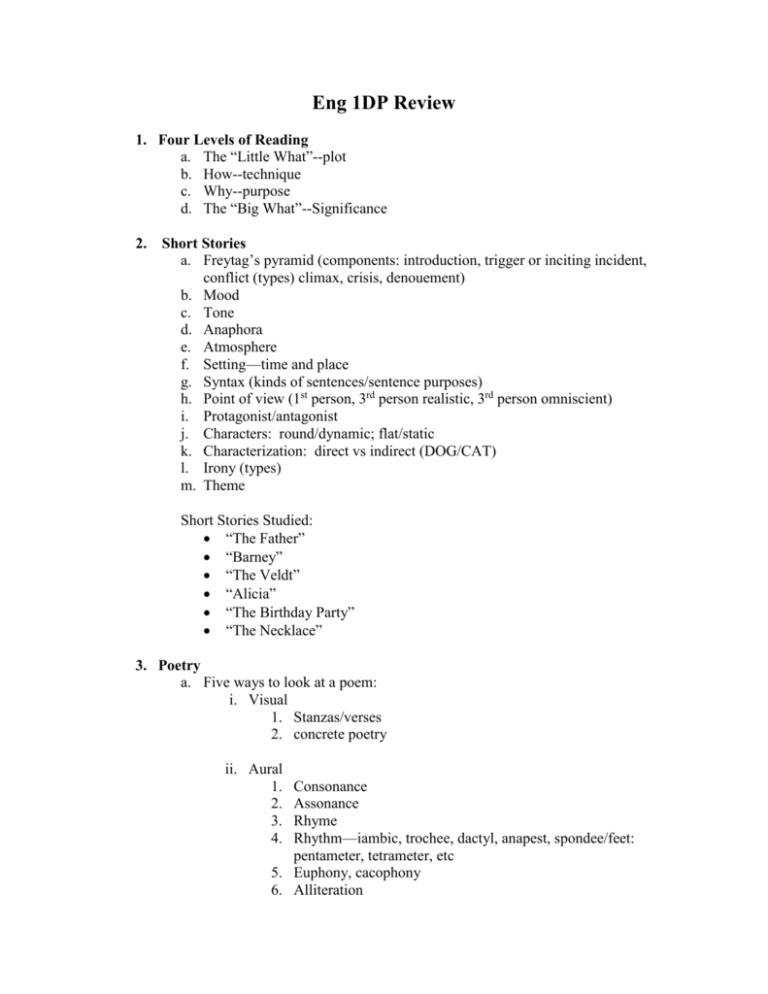
Eng 1DP Review 1. Four Levels of Reading a. The “Little What”--plot b. How--technique c. Why--purpose d. The “Big What”--Significance 2. Short Stories a. Freytag’s pyramid (components: introduction, trigger or inciting incident, conflict (types) climax, crisis, denouement) b. Mood c. Tone d. Anaphora e. Atmosphere f. Setting—time and place g. Syntax (kinds of sentences/sentence purposes) h. Point of view (1st person, 3rd person realistic, 3rd person omniscient) i. Protagonist/antagonist j. Characters: round/dynamic; flat/static k. Characterization: direct vs indirect (DOG/CAT) l. Irony (types) m. Theme Short Stories Studied: “The Father” “Barney” “The Veldt” “Alicia” “The Birthday Party” “The Necklace” 3. Poetry a. Five ways to look at a poem: i. Visual 1. Stanzas/verses 2. concrete poetry ii. Aural 1. 2. 3. 4. Consonance Assonance Rhyme Rhythm—iambic, trochee, dactyl, anapest, spondee/feet: pentameter, tetrameter, etc 5. Euphony, cacophony 6. Alliteration 7. Onomatopoeia iii. Poetic devices 1. Metaphor 2. Simile 3. Symbol 4. Metonym 5. Synecdoche 6. Image 7. Allusion 8. Personification 9. Hyperbole 10. Paradox 11. Oxymoron iv. Denotation v. Connotation b. Genres of Poetry—characteristics of each i. Acrostic ii. Concrete iii. Found iv. Elegy v. Ode vi. Sonnet 1. characteristics of sonnets in general 2. types (Italian or Petrarchan vs English or Shakespearean) 3. rhetorical structure of sonnets 4. Shakespeare’s involvement with sonnets a. Notion of circles within circles—both public and private at the same time b. Subjects of his poems: young man, dark lady, rival poet c. Theatre closing in 1592—effect on Shakespeare 4. Novel Study—To Kill a Mockingbird a. Historical context to story i. Scottsboro trial ii. Till trial iii. Civil rights movement iv. Jim Crow laws b. Plot c. Narrative Technique –Scout looking back as adult at herself as child (bildungsroman) d. Themes: i. prejudice, hypocrisy, social status ii. courage—in its many forms iii. empathy iv. maturity e. Characterization i. Role of major and minor characters ii. Foil 5. Mythology a. Purpose of Myth—see Karen Armstrong’s A Short History of Mythology b. Archetype c. 3 ways of examining myth—archetype, purpose, ethnocentric d. Heroic pattern 6. Drama—Romeo and Juliet a. Shakespeare’s life b. Shakespeare’s theatre c. Dramaturgy d. Important terms i. Soliloquy ii. Aside iii. Oxymoron iv. Pun v. Sonnet vi. Chorus vii. Aubade viii. Pathetic fallacy ix. Courtly love tradition x. Fate xi. 5 Act structure xii. Tragedy—nature of tragedy (tragic flaw(s)) e. Thematic concerns of Romeo and Juliet i. Fate vs Free will ii. Young love—impulsivity iii. Truth vs deception iv. Communication—failures v. Parent-child relationships vi. Failure/foolishness/destructiveness of grudges or feuds f. Characters and characterization i. Characteristics of major characters ii. Characteristics and functions of minor characters
